Dive into the world of the World Endurance Championship with our comprehensive guide to mastering the Porsche 963 Hypercar #99 of Proton Competition at the iconic Circuit of the Americas (COTA) using P1 SIM Mistral pedals. Proton Competition has demonstrated exceptional prowess in endurance racing, with remarkable results in the last round of the WEC at Interlagos, showcasing their skill and the performance of the Porsche 963 Hypercar. Discover how to fine-tune your setup for maximum performance and precision, while optimizing energy management and regenerative braking.
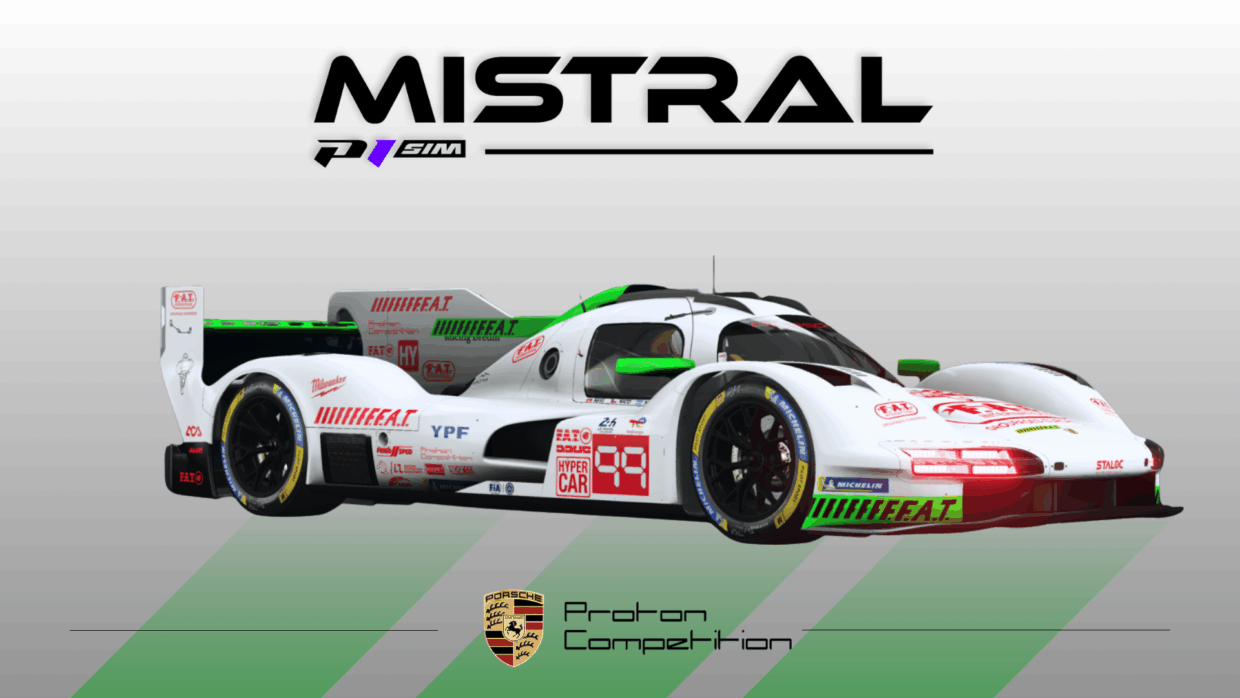
Circuit of the Americas: A Technical Challenge
Pedal Calibration
Pedal calibration is crucial for achieving optimal response. For the Porsche 963, a calibration of 101 kg is recommended. This calibration provides a realistic and precise braking feel, essential for optimal control on a demanding circuit like COTA.
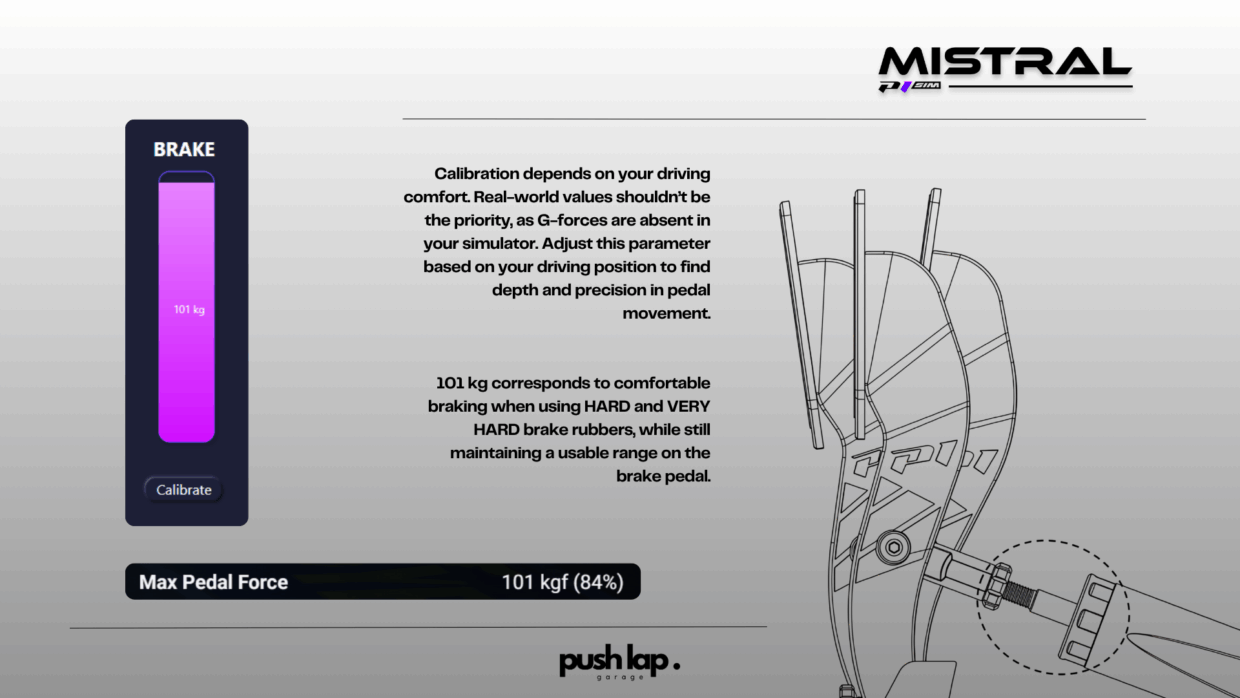
Brake Elastomer Selection
The choice of brake elastomers primarily depends on your driving comfort. For the Porsche 963, it is generally recommended to use HARD or VERY HARD compounds to replicate the stiffness and responsiveness needed to meet the braking demands of a WEC race car.
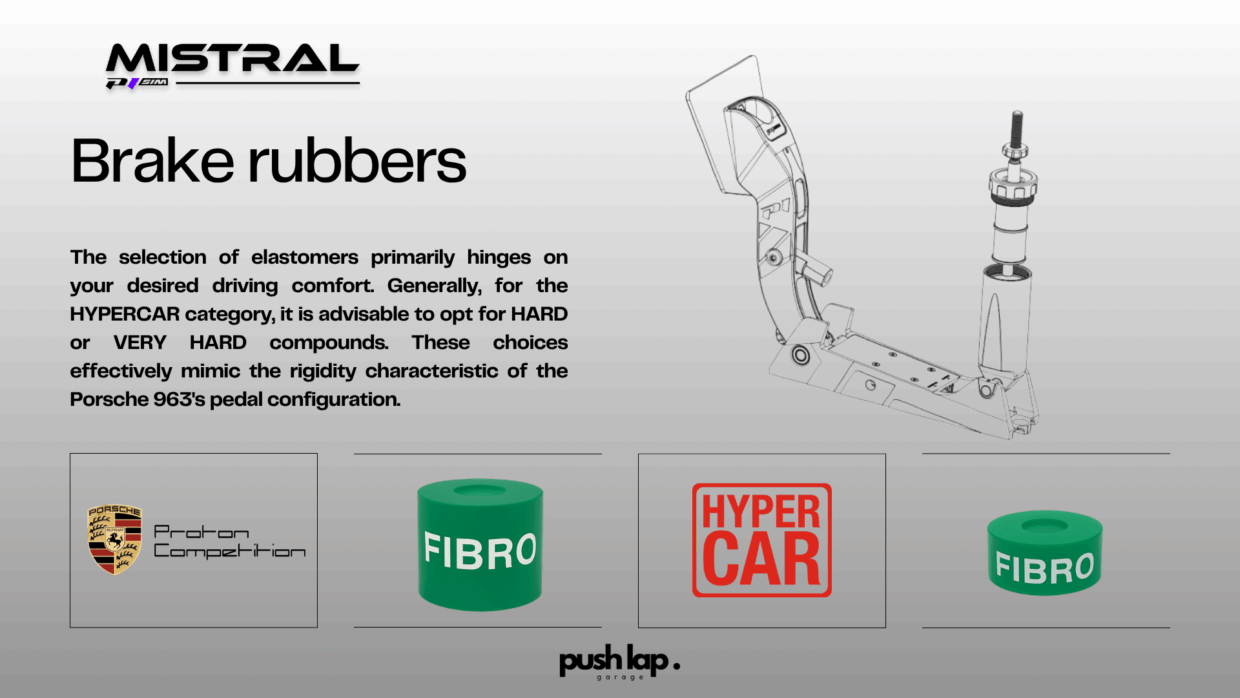
Energy Management and Regenerative Braking
Effective energy management is crucial for maximizing the performance of the Porsche 963, especially on a demanding circuit like COTA.
Energy Balance
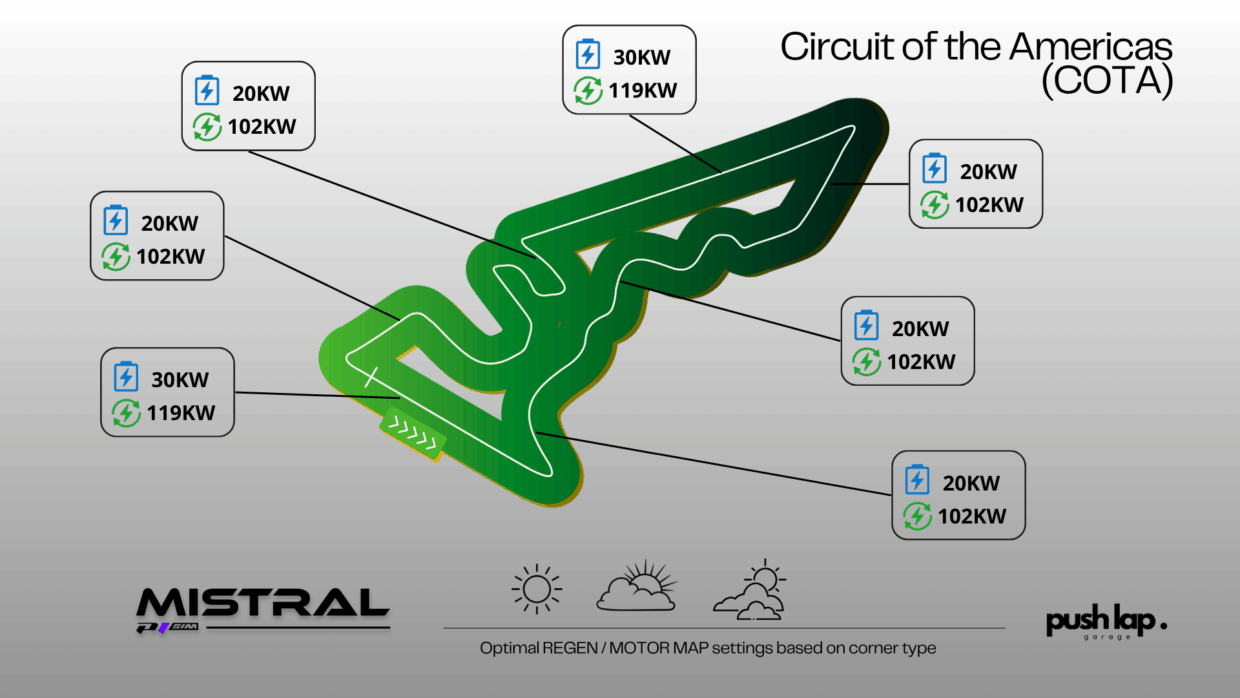
- Race Mode: In race mode, an optimal balance between energy recovery and deployment is 102 kW for recovery and 30 kW for deployment. This balance helps maintain constant temperatures in the brakes and tires, ensuring optimal performance.
- Qualifying Mode: In qualifying, it is advisable to find a lower recovery setting while deploying all the battery’s energy in a single lap to maximize performance.
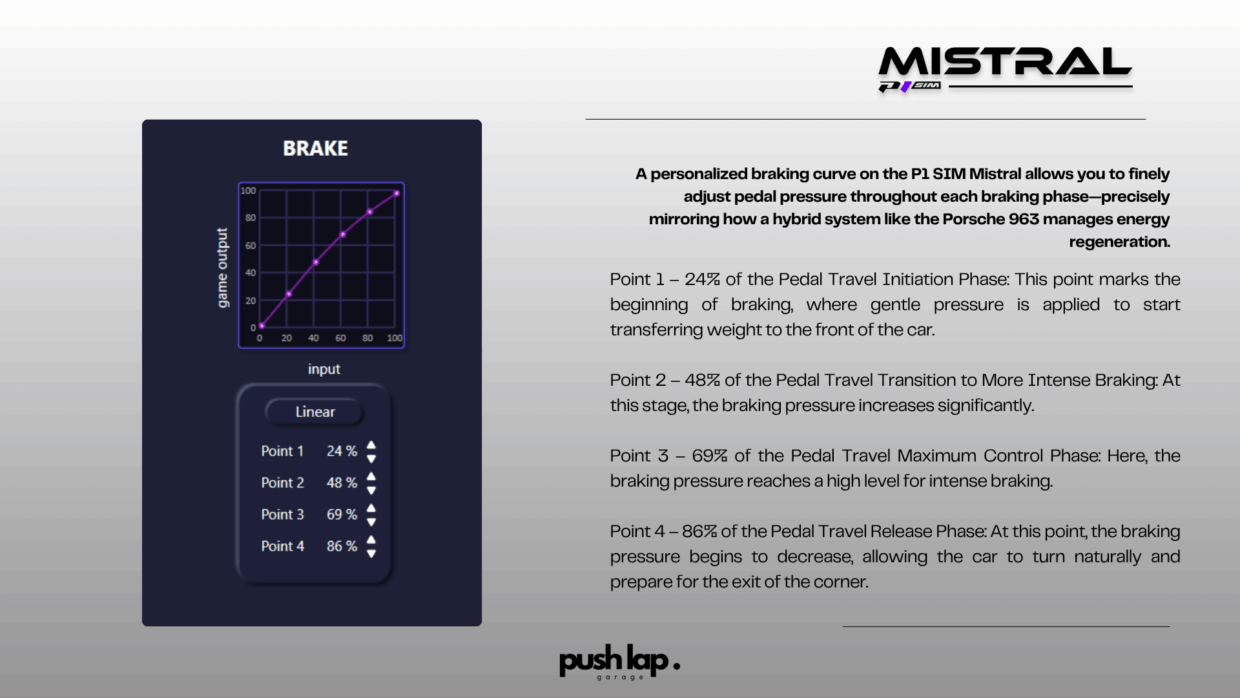
Turn 1
- Description: Tight left turn following a long straight.
- Braking Curve: Start with a gentle initiation (Point 1 – 24%) but quickly increase to maximum braking (Point 4 – 86%).
- Energy Recovery: 15 kW. Intense braking allows for significant energy recovery.
Turn 4
- Description: Moderately fast right turn.
- Braking Curve: Moderate braking (Point 2 – 48%).
- Energy Recovery: 5 kW. Moderate braking stabilizes the car.
Turn 7
- Description: Moderately fast left turn.
- Braking Curve: Moderate braking (Point 2 – 48%).
- Energy Recovery: 4 kW.
Turn 11
- Description: Tighter left turn.
- Braking Curve: Intense braking (Point 3 – 69%).
- Energy Recovery: 8 kW. Intense braking for approaching the tight turn.
Turn 12
- Description: Right turn uphill.
- Braking Curve: Maximum braking (Point 4 – 86%).
- Energy Recovery: 10 kW. Intense braking to manage the uphill.
Turn 13
- Description: Moderately fast left turn.
- Braking Curve: Moderate braking (Point 2 – 48%).
- Energy Recovery: 4 kW.
Turn 19
- Description: Less demanding left turn.
- Braking Curve: Light braking (Point 1 – 24%).
- Energy Recovery: 2 kW.
Turn 20
- Description: Final right turn before the main straight.
- Braking Curve: Light braking (Point 1 – 24%).
- Energy Recovery: 2 kW.
Force Feedback Settings in the Game
Force feedback (FFB) in the game is a crucial element for an immersive and realistic driving experience. For the Porsche 963, it is recommended to set the overall FFB strength to around 64%. This setting offers a solid foundation for feeling the forces exerted on the steering wheel, while avoiding excessive fatigue. With a steering wheel rotation range of 550 degrees, this setting allows for optimal precision when navigating the technical turns of the COTA circuit. This 550-degree rotation enables us to fully utilize the entire range of the Porsche 963’s physics, reaching the steering lock, which is a sign of proper use of the vehicle’s physics. It is also advisable to disable the automatic steering rotation options to have full control over the direction, which is essential for precise and immersive driving.

Importance of Fine Force Feedback (FFB) Details with the ClubSport Base
To achieve fine details and a realistic driving experience with the 12 Nm ClubSport base, it is essential to properly adjust the force feedback. A setting of 55% is recommended for this specific base. This setting allows you to capture the subtleties of the circuit, such as variations in the track surface, loss of traction, and aerodynamic forces. By focusing on fine details, you can better understand and react to the forces at play, thereby improving your spatial awareness and responsiveness on the track. This is particularly important on a technical circuit like COTA, where every detail can make a difference in terms of performance and precision.
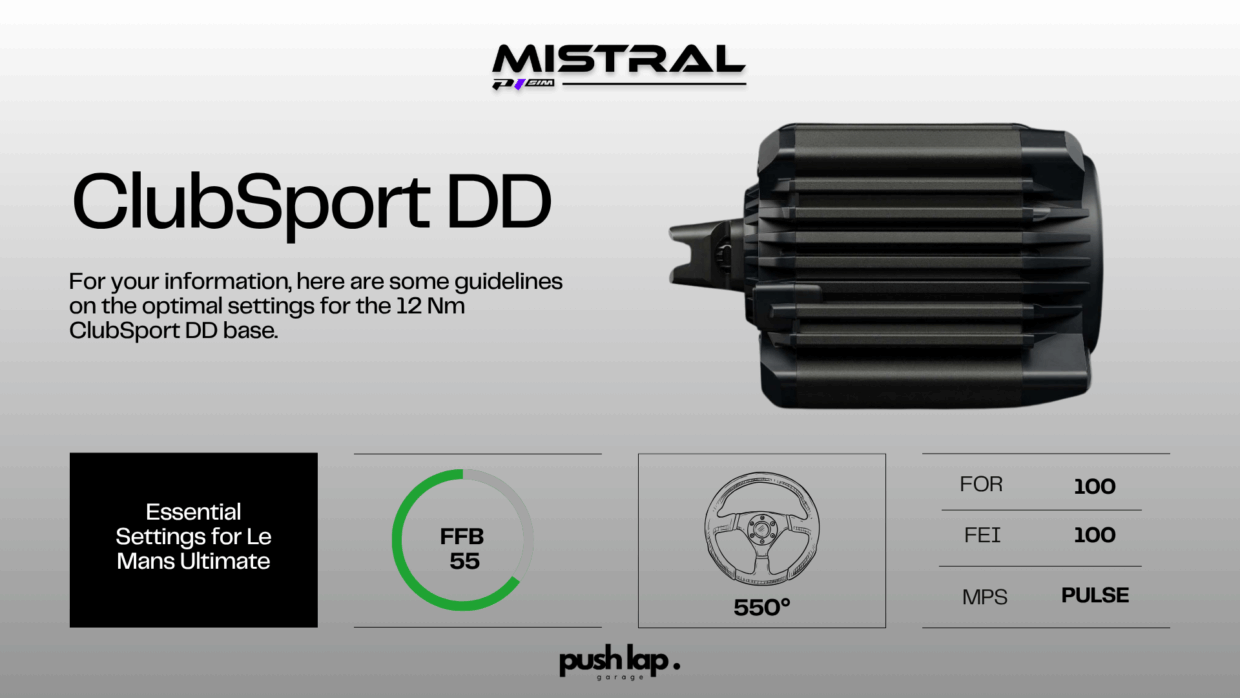
Virtual Position in the Vehicle
The virtual position in the vehicle is an often-overlooked aspect, but it is crucial for achieving a realistic and optimal driving sensation. With a default Field of View (FOV) of 49, it is recommended to move the driving position forward by 13 units while keeping the height at zero. This adjustment better aligns your perspective with the vehicle’s center of gravity, which is essential for precise and immersive driving. The Porsche 963 is well-balanced by default, and this setting can be compared to adjusting the center of gravity or the physics center of the vehicle. It’s important to note that this setting may vary depending on the selected FOV, as different FOVs can alter your perception of distance and position within the vehicle. By correctly adjusting your virtual position, you can enhance your spatial awareness and responsiveness, which is crucial for navigating the technical turns and elevation changes of the COTA circuit.
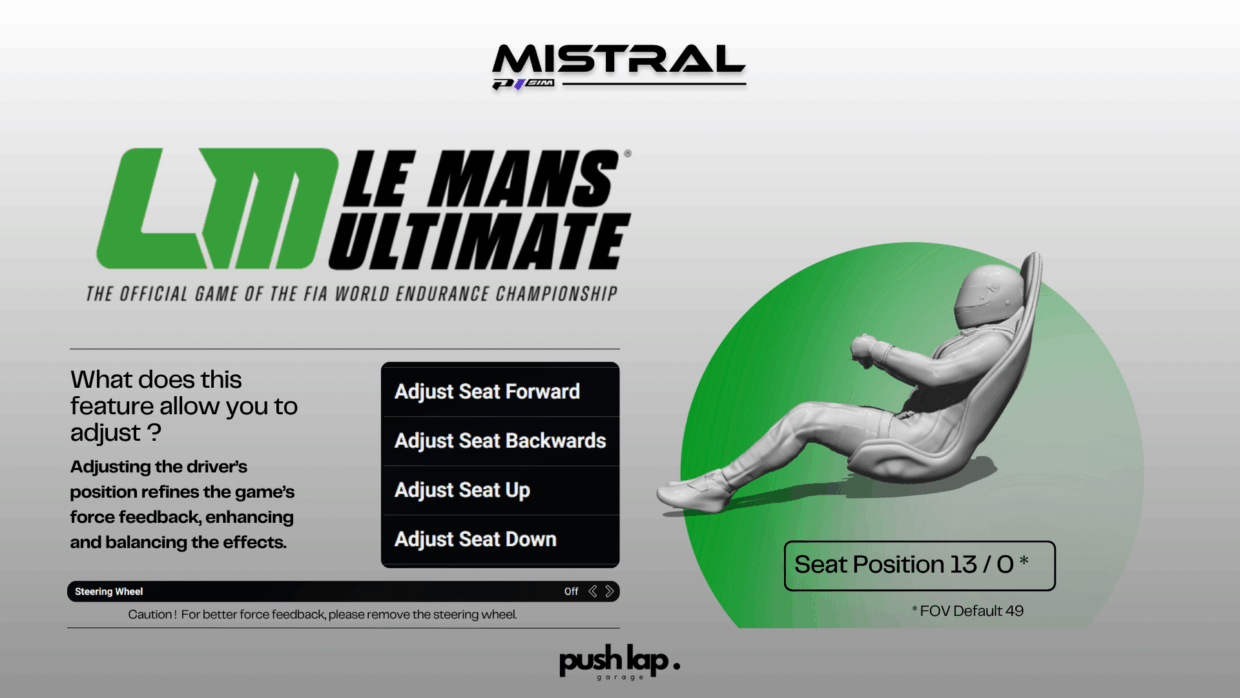
Conclusion
The Porsche 963 Hypercar #99, driven by the skilled team at Proton Competition, stands as a testament to the pinnacle of endurance racing technology and strategy. With its advanced hybrid system and meticulously designed aerodynamics, the Porsche 963 offers a unique and exhilarating driving experience in the World Endurance Championship. The car’s ability to balance raw power with sophisticated energy management makes it a formidable contender on any circuit, particularly on a technically challenging track like the Circuit of the Americas.
By fine-tuning your P1 SIM Mistral pedal setup, you can achieve a level of precision and control that mirrors the capabilities of the Porsche 963 Hypercar. Understanding the intricacies of the car’s energy dynamics, from regenerative braking to optimal energy deployment, allows you to harness its full potential. Each adjustment, whether it’s the calibration of the pedals, the configuration of the steering wheel, or the virtual positioning within the vehicle, contributes to a more immersive and effective driving experience.
Moreover, the strategic approach to braking and energy recovery, tailored to the specific demands of each turn on the COTA circuit, can significantly enhance your performance. The insights gained from telemetry data and the emphasis on fine details in force feedback further refine your ability to respond to the nuances of the track, ensuring that you maintain optimal brake and tire temperatures throughout the race.
In essence, mastering the Porsche 963 Hypercar #99 is about more than just driving; it’s about embracing a holistic approach that integrates technology, strategy, and skill. By leveraging the detailed setup guides and continuously refining your techniques, you can unlock the full potential of this remarkable machine and achieve outstanding results on the demanding Circuit of the Americas.
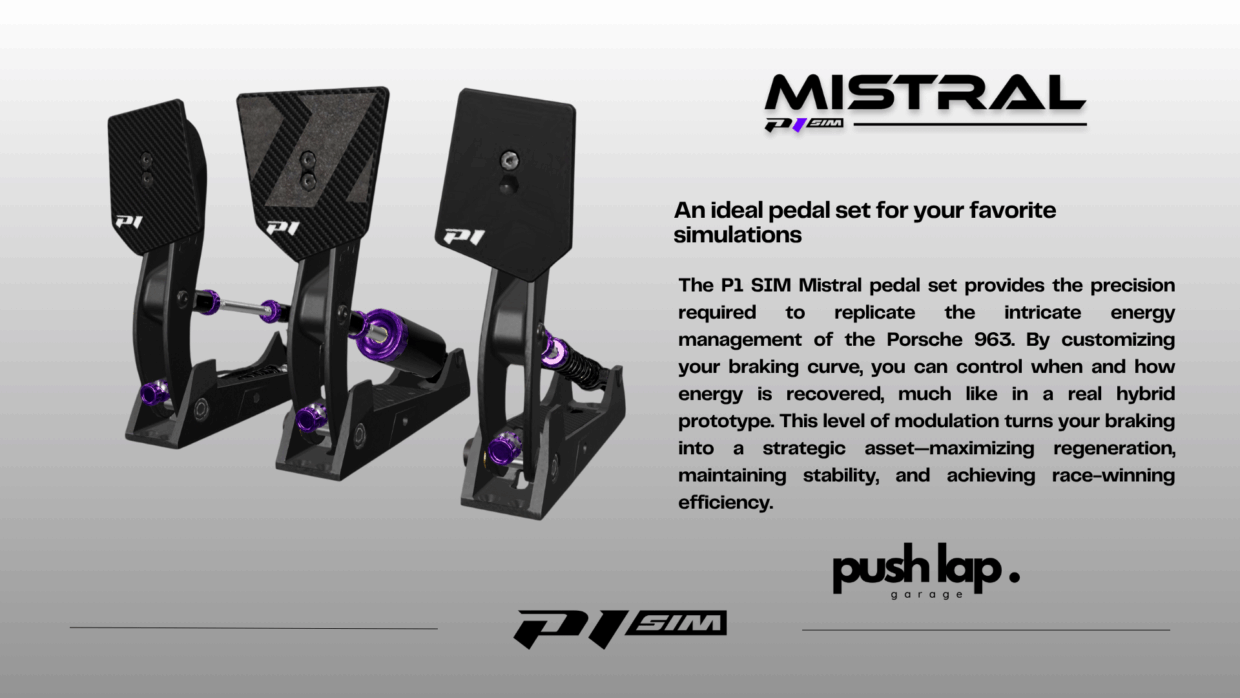

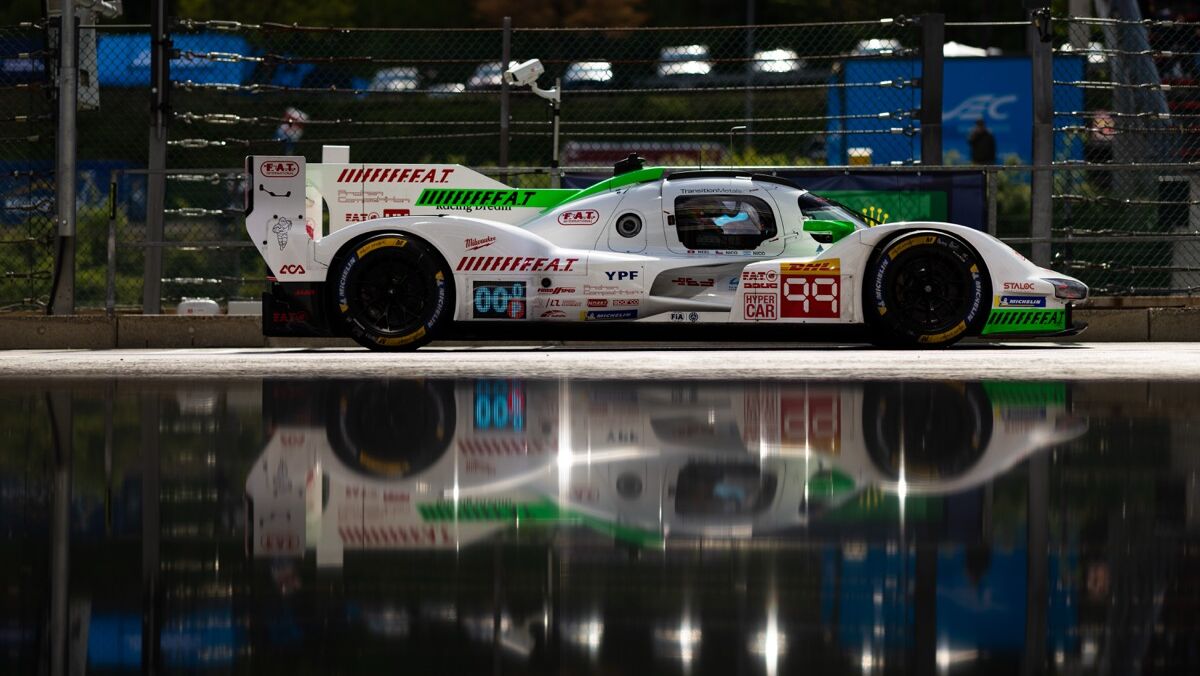
Leave a Comment